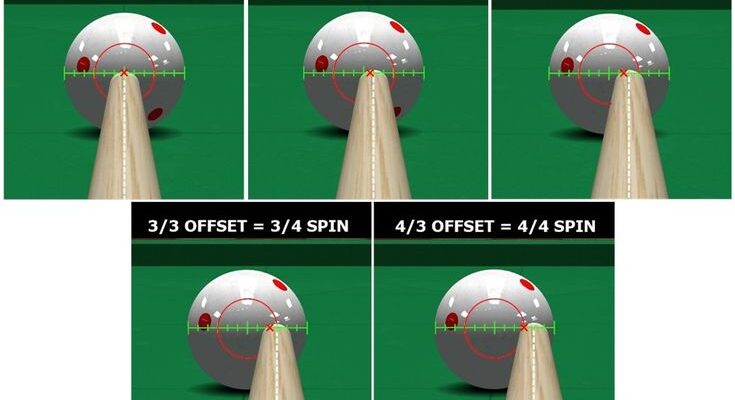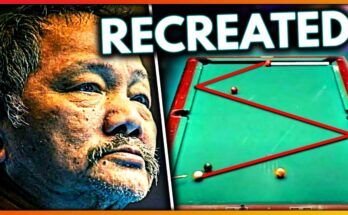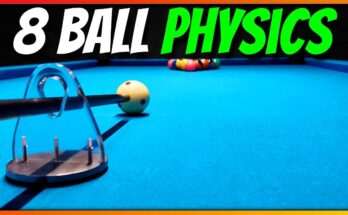Mastering Cue Ball Spin: A Guide to Offset Techniques in Billiards
Achieving precise control over the cue ball is a cornerstone of success in billiards, and understanding how to apply spin through offset techniques can elevate your game to new heights. This detailed guide, inspired by the instructional chart illustrating cue ball offset and spin relationships, explores the five key offset positions and their corresponding spin effects. As of 04:35 PM EDT on Wednesday, July 02, 2025, this post provides valuable insights for billiards players of all levels, from beginners to seasoned competitors, looking to refine their shot-making skills.

The Basics of Offset and Spin
The chart visually demonstrates how the point of contact on the cue ball, relative to its center, influences the amount of spin imparted during a shot. Offset refers to the distance the cue tip is positioned away from the ball’s vertical center line, measured in fractions of the ball’s diameter. Each offset level—0, 1/3, 2/3, 3/3, and 4/3—corresponds to a specific spin ratio, ranging from 0 to 4/4, affecting the ball’s trajectory, speed, and interaction with object balls and cushions. The illustrations, set against a green felt background, show a cue stick aligned with a cue ball marked with a red dot to indicate the contact point.
Detailed Breakdown of Offset Techniques
- 0 Offset = 0 Spin: The first image depicts the cue tip striking the center of the cue ball, labeled “0 OFFSET = 0 SPIN.” With no offset, the ball moves forward in a straight line without spin, ideal for basic shots requiring minimal curve or follow. The red dot aligns perfectly with the cue’s path, ensuring a neutral roll.
- 1/3 Offset = 1/4 Spin: The second illustration shows the cue tip offset by one-third of the ball’s diameter, labeled “1/3 OFFSET = 1/4 SPIN.” This slight offset imparts a quarter spin, introducing a gentle curve or follow. The red dot is positioned slightly above the center, suggesting a mild topspin or draw depending on the angle, perfect for controlled positional play.
- 2/3 Offset = 2/4 Spin: The third image features a two-thirds offset, labeled “2/3 OFFSET = 2/4 SPIN.” This half-spin level creates a noticeable curve or enhanced follow/draw, with the red dot shifted further from the center. This technique is useful for navigating around obstacles or achieving moderate position adjustments after contact.
- 3/3 Offset = 3/4 Spin: The fourth sketch illustrates a full offset (three-thirds), labeled “3/3 OFFSET = 3/4 SPIN.” This three-quarter spin generates a significant curve or strong follow/draw, with the red dot at the ball’s upper or lower edge. Players use this for advanced shots, such as massé shots or precise angle corrections, requiring careful cue elevation.
- 4/3 Offset = 4/4 Spin: The final image shows an offset exceeding the ball’s diameter (four-thirds), labeled “4/3 OFFSET = 4/4 SPIN.” This full spin maximizes curve or extreme follow/draw, with the red dot at the ball’s extreme edge. This technique, often used with a steep cue angle, is ideal for dramatic shots like jump shots or sharp breaks, demanding precision to avoid miscues.
Techniques and Tips
- Cue Alignment: Position the cue tip accurately using the red dot as a guide, adjusting based on the desired spin. Practice aligning the cue parallel to the table for center shots and at angles for offset shots.
- Stroke Control: Use a smooth, controlled stroke to apply consistent force. Increase speed slightly with higher offsets to maintain accuracy, but avoid excessive power to prevent skidding.
- Bridge Hand: Maintain a stable bridge hand to support the cue, adjusting height with offset to match the contact point (e.g., elevated for 4/3 offset).
- Practice Drills: Start with 0 and 1/3 offsets to master basic control, then progress to 2/3 and beyond. Use a training table or grid to track spin effects on the cue ball’s path.
Practical Applications
These offset techniques allow players to manipulate the cue ball’s behavior—straight shots for simplicity, gentle curves for positioning, or extreme spins for trick shots. The spin ratio directly influences post-contact movement, such as follow (forward spin), draw (backspin), or sidespin (English), enabling strategic play in games like eight-ball or nine-ball.
Enhancing Your Billiards Skills
This guide to cue ball offset and spin, as observed on July 02, 2025, offers a structured approach to mastering billiards techniques. For beginners, practicing each offset with a coach or video feedback can build confidence. Visit local billiard halls, study professional matches, or join skill workshops to refine your spin control. Whether you’re aiming for a casual game or competitive edge, these methods will transform your shot precision—grab a cue and start experimenting today!



